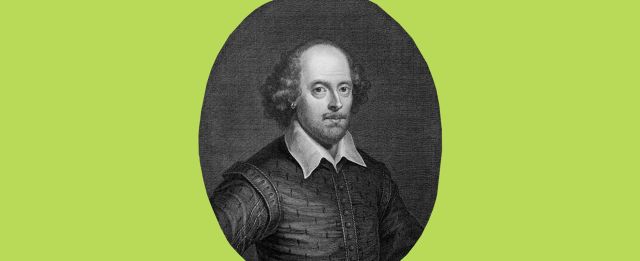12 Famous Lines of Poetry, and Where They Come From

It’s always impressive when someone can recite an entire poem by memory, but most of us can at least quote a few famous poetic lines — some of which have become so popular, they’ve entered the English language as common expressions.
We might, for example, be familiar with the expression, “Hope springs eternal,” but how many people know what poem it comes from without looking it up? (It’s from Alexander Pope’s 18th-century work “An Essay on Man.”)
In honor of these memorable verses, here are the stories behind some of the most famous lines of poetry in history, from William Shakespeare to Gertrude Stein.
Shakespeare is best known for his 39 plays, but he also wrote 154 sonnets (which, in Shakespeare’s case, largely follow the same rhyme scheme and 14-line length). His sonnets, like his plays, contain many famous phrases, none more so than the opening line of “Sonnet 18.”
The accessible nature of Mary Oliver’s poetry helped make her one of the bestselling — and best-loved — poets in the United States. She wrote many quotable lines, but this stirring probe may be her most famous.
Alexander Pope’s verse argued that bad criticism does more harm than bad writing, and that poets are made and not born. The piece gave us a number of other famous lines, including “A little learning is a dang’rous thing” and “Fools rush in where angels fear to tread.”
Many poems have been inspired by long walks in the countryside, and Wordsworth’s “Daffodils,” as it is also known, is no exception. The poem had its critics upon publication, but is now considered a classic of English Romantic poetry.
Published in 1925, Eliot’s poem examines the feelings of hopelessness, disarray, and religious confusion in Europe in the wake of the First World War. The poem has since been referenced in many other works, from Stephen King’s novel Pet Sematary to movies such as Apocalypse Now and Tenet.
Published in 1850, Alfred, Lord Tennyson’s “In Memoriam” is a requiem for the poet’s friend Arthur Henry Hallam, who died suddenly at the age of 22. Tennyson’s examination and portrayal of grief spans 2,916 lines, in what is widely considered one of the greatest poems of the 19th century.
Gertrude Stein’s first “Rose” in this line refers to an actual person, while the subsequent repetition of the famously romantic flower has been interpreted as meaning “things are what they are.” Stein herself stated that she was trying to give the rose back its identity, saying, “I think in that line the rose is red for the first time in English poetry for a hundred years.”
Few works of literature better capture the threshold of death than Dylan Thomas’ hugely emotive poem. The repeated refrain of “Rage, rage against the dying of the light” is spoken to a dying father; Thomas’ own father died five years after the poem was written.
The trippy nature of “Kubla Khan” comes as little surprise considering Samuel Taylor Coleridge composed the poem after experiencing an opium-influenced dream. Coleridge wrote the piece in 1797, and it wasn’t published until 1816, when Lord Byron convinced him to make it public.
Keats’ contemplation of a Greek urn has had critics in a tizzy since its publication in 1819. Variously derided and celebrated as either delightfully enigmatic or downright silly, it is now considered one of the greatest odes in the English language — and its final comment on truth and beauty continues to provoke much debate.
Written in 1961, “Warning” is a well-loved poem in which a woman imagines herself in old age as a cheeky, fun-loving, and unapologetic senior determined to make the most of her advancing years.
“Funeral Blues,” also known as “Stop All the Clocks,” is a touching elegy that beautifully describes the pain and isolation following the loss of a loved one. It originally appeared in the 1936 play The Ascent of F6, and later gained greater popularity when it was read in the 1994 movie Four Weddings and a Funeral. 





